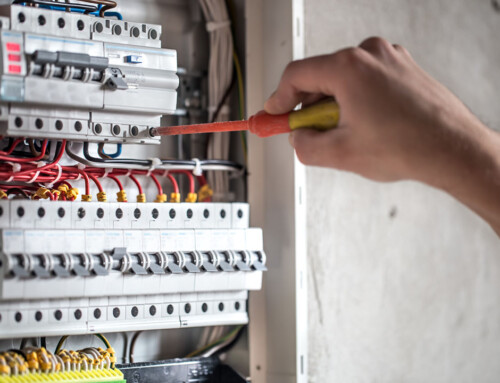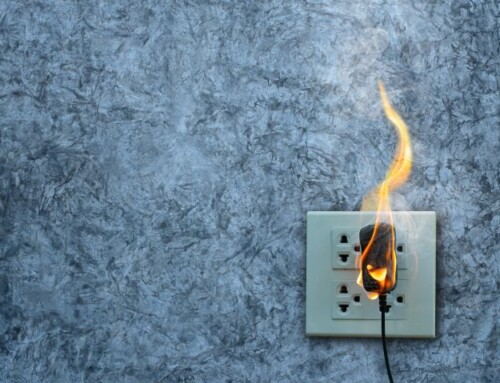Table of Contents
In a typical house, there are two types of electrical outlets: the 15 amp outlet and the 20 amp outlet. If you are installing new circuits and outlets and need to decide between getting a 15 vs 20 amp outlet, this post is for you. Even if you are generally curious about the fundamentals of both these circuits, this article can serve as a useful guide.
So, continue reading to find out the difference between 15 and 20-amp outlets based on typical wire diameters, uses, power, and other essential considerations. So, let’s begin!
What is an Amp?
Amp (or amperes) is an electrical current measurement unit. Amps detect the flow of electrons across an electrical circuit, which powers all of your gadgets and gizmos. It’s similar to the flow rate of water via a hose: the more you open the tap, the greater the flow.
In simple terms, amps notify the quantity of electricity required to power your equipment, appliances, and lights. It influences everything from circuit breakers to the length of your extension cable.
What is a 15 Amp Outlet?
The 15 amp outlet is your primary power source in the living room and bedroom. It is the most often used outlet in households. It can power items requiring up to 12 amps, such as televisions, lights, fans, and chargers. As a result, it just requires a 14 AWG cable to be attached to them.
What is a 20 Amp Outlet?
A 20 amp outlet is primarily intended for heavy-duty equipment found in the kitchen and laundry area. To properly set it up, you need 12 or 10 AWG wires and a 20 amp circuit breaker.
These outlets are mainly for big appliances like refrigerators and washing machines. So, they are not typically installed in every room. And because 20 amp outlets pack a lot of power, they often come as GFCI outlets to keep you safe from electric shocks.
When Do You Need 15 Amp Electrical Receptacles?
If you have a 15-amp circuit, it’s crucial to use a 15-amp receptacle as per the NEC (National Electrical Code). This is because the electrical conductors in a 15-amp circuit aren’t suitable for appliances that draw more than 15 amps. Using a 20-amp appliance on a 15-amp circuit can trip the breaker and pose a safety risk.
However, if your circuit is 20 amps, you can install a 15-amp electrical receptacle. But you can do it only if there are multiple receptacles on the same circuit, like the ones you’d find in your kitchen or bathroom.
Most everyday appliances like computers, TVs, vacuum cleaners, toasters, coffee makers, fridges, power tools, and microwaves found in homes draw less than 15 amps, usually much less. They generally have three prongs with two vertical blades and one round one. These everyday items are compatible with both 15-amp and 20-amp circuits.
When Do You Need 20 Amp Electrical Receptacles?
Here’s the deal: equipment drawing close to 20 amps is uncommon in typical households. Window air conditioners, sump pumps, larger shop equipment, big freezers or large refrigerators, and commercial kitchen appliances are some of the items that may require a 20-amp electrical receptacle.
Sometimes builders or electricians install 20-amp receptacles because they are strong and can accept either a 15-amp or a 20-amp plug. As long as they’re on a 20-amp circuit, it’s OK, albeit a little costly. But remember never to use a 20-amp receptacle on a 15-amp circuit if you don’t want to violate a crucial electrical code.
15 Amp vs 20 Amp Outlet – What’s Different!
Let’s dive into the major differences between 15 amp and 20 amp outlets.
-
Physical Differences
15 amp outlets are usually designed with two parallel slots and a half-rounded grounding slot. On the contrary, 20 amp outlets have a T-shaped slot for the neutral prong and a horizontal slot for the hot prong, along with the grounding slot.
-
Power Capabilities
A 15 amp outlet can handle a maximum load of 1800 Watts, while a 20 amp outlet can handle up to 2400 Watts. This means the 20 amp outlet has a higher power capacity.
-
Suitable Circuit Breaker
For a 15 amp outlet, a 15 amp circuit breaker is the ideal match. On the other hand, a 20 amp outlet should be paired with a 20 amp circuit breaker for proper protection.
-
Wire Gauge
The wire gauge for a 15 amp outlet is typically 14-gauge, whereas a 20 amp outlet requires a thicker 12-gauge wire to handle the increased current flow.
-
Usage
15 amp outlets are commonly used in standard household applications such as lighting and small appliances. Meanwhile, 20 amp outlets are more suitable for heavy-duty equipment like power tools and larger appliances.
-
Cost
In terms of cost, 20 amp outlets and related components may be slightly more expensive than their 15 Amp counterparts due to the higher power handling capabilities.
So that’s all – the fundamentals of both 15 amp and 20 amp outlets, including their distinctions and typical applications. It’s safe to say that you are now better prepared to select the appropriate breaker, outlet, and wiring for your home or workplace.
Remember that it is not a matter of picking between 15 vs 20 amp outlets. Instead, it is about finding a suitable match for your household’s electric demands.






